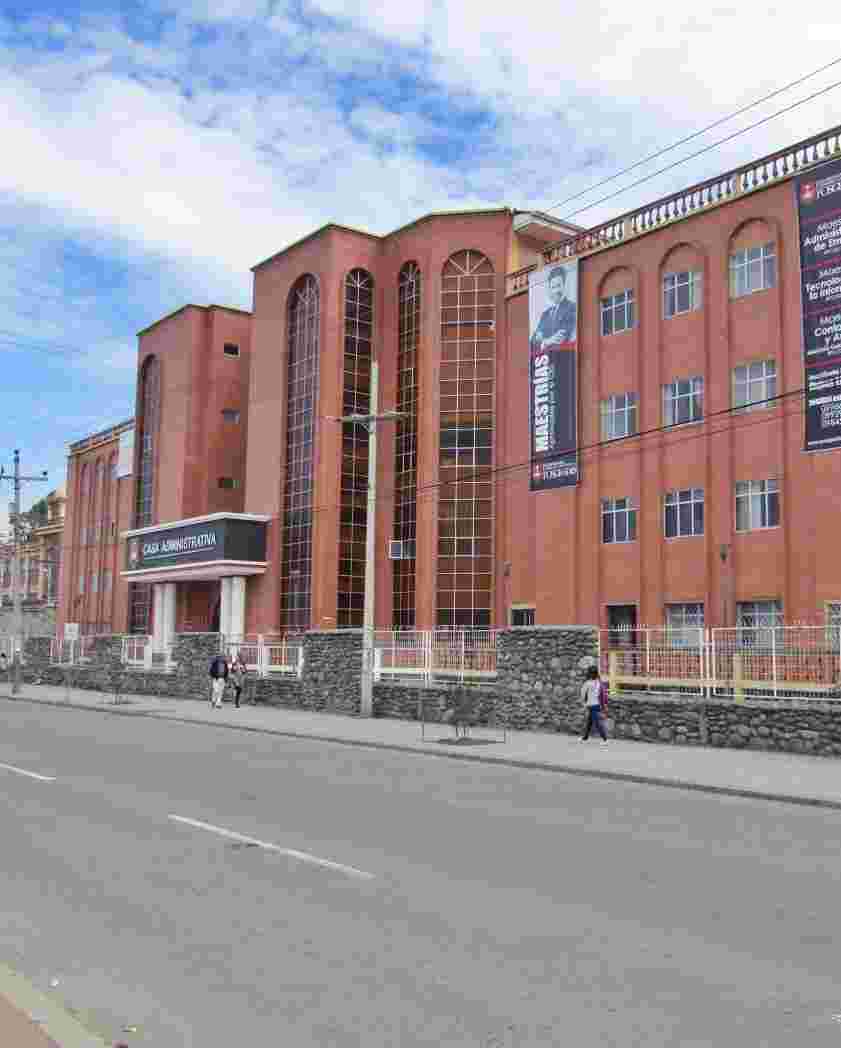Métodos para determinar el biotipo periodontal. Una revisiòn de la literatura
| dc.contributor.advisor | Tello Terán, Damián Alfredo | |
| dc.contributor.author | Flores Calle, Carlos Alberto | |
| dc.contributor.cedula | 0302592795 | es_ES |
| dc.contributor.other | ., . | |
| dc.coverage | Azogues - Euador | es_ES |
| dc.date.accessioned | 2022-07-21T00:38:43Z | |
| dc.date.available | 2022-07-21T00:38:43Z | |
| dc.date.issued | 2020 | |
| dc.description | En la actualidad para realizar varias intervenciones odontológicas es necesario una correcta evaluación del biotipo periodontal razón por la cual es necesario conocer los diferentes métodos de evaluación con el fin de evitar errores en la identificación del biotipo. OBJETIVO: El objetivo de esta investigación fue identificar los métodos usados para determinar el biotipo periodontal. MATERIALES Y MÉTODOS: Se realizó una revisión de la literatura considerando los siguientes criterios. Estudios que incluyeran datos acerca de métodos para determinar el biotipo periodontal, la efectividad de métodos para determinar el biotipo periodontal y aplicación de nuevos métodos para determinar el biotipo periodontal. Se realizó la búsqueda en las siguientes bases de datos: PubMed, Portal de Cochrane, Medline, Scielo, Springer, Elsevier Y Google académico. RESULTADOS: se identificaron 8 métodos para determinar el biotipo periodontal entre los tenemos: Visual, Transparencia de sonda, Evaluación transgingival, ultrasonido, Tomografía computarizada, Calibrador modificado, Análisis fotográfico y Tomografía Computarizada de Haz Cónico. CONCLUSIONES: Entre los métodos mencionados en este estudio no todos poseen el mismo grado de exactitud sin embargo hoy en día es muy recomendable el uso de Tomografía Computarizada de Haz Cónico como método para determinar el biotipo periodontal ya que posee una alta precisión y desviación mínima si lo comparamos con los métodos convencionales por lo que podemos llegar a la concluir que actualmente es el método con la mayor precisión para determinar el biotipo periodontal. | es_ES |
| dc.description.abstract | At present, to carry out various dental interventions, a correct evaluation of the periodontal biotype is necessary, which is why it is necessary to know the different evaluation methods in order to avoid errors in the identification of the biotype.AIM: The objective of this research was to identify the methods used to determine the periodontal biotype. MATERIAL AND METHODS: A literature review was carried out considering the following criteria. Studies that will include data on methods to determine the periodontal biotype, the effectiveness of methods to determine the periodontal biotype and the application of new methods to determine the periodontal biotype. The following databases were searched: PubMed, Cochrane Portal, Medline, Scielo, Springer, Elsevier, and academic Google. RESULTS: Eight methods were identified to determine the periodontal biotype, among which we have: Visual, Probe Transparency, Transgingival Evaluation, Ultrasound, Computed Tomography, Modified Calibrator, Photographic Analysis and Cone Beam Computed Tomography. CONCLUSIONS: Among the methods mentioned in this study, not all have the same degree of accuracy, however, today the use of Cone Beam Computed Tomography is highly recommended as a method to determine the periodontal biotype since it has high precision and minimal deviation if we compare it. With conventional methods, we can conclude that it is currently the method with the highest precision to determine the periodontal biotype. | es_ES |
| dc.description.peer-review | . | es_ES |
| dc.description.sponsorship | . | es_ES |
| dc.description.uri | Trabajo de investigación | es_ES |
| dc.format | application/pdf | es_ES |
| dc.format.extent | ix, 44 páginas | es_ES |
| dc.identifier.citation | Flores Calle, C.A. (2020) Métodos para determinar el biotipo periodontal. Una revisiòn de la literatura. Universidad Católica de Cuenca. | es_ES |
| dc.identifier.doi | . | es_ES |
| dc.identifier.journal | . | es_ES |
| dc.identifier.other | 10BT2020-TOdo-8 | |
| dc.identifier.uri | https://dspace.ucacue.edu.ec/handle/ucacue/11741 | |
| dc.language.iso | spa | es_ES |
| dc.publisher | Universidad Católica de Cuenca. | es_ES |
| dc.relation | . | es_ES |
| dc.relation.ispartofseries | .;. | |
| dc.relation.uri | . | es_ES |
| dc.rights | info:eu-repo/semantics/openAccess | es_ES |
| dc.rights.uri | http://creativecommons.org/licenses/by/4.0/deed.es | es_ES |
| dc.source | Universidad Católica de Cuenca | es_ES |
| dc.source | Repositorio Institucional - UCACUE | es_ES |
| dc.subject | Métodos | es_ES |
| dc.subject | Evaluación | es_ES |
| dc.subject | Diagnóstico | es_ES |
| dc.subject | Biotipo Periodontal | es_ES |
| dc.subject | Biotipo Gingival | es_ES |
| dc.subject.ocde | Methods | es_ES |
| dc.subject.ocde | Evaluation | es_ES |
| dc.subject.ocde | Diagnosis | es_ES |
| dc.subject.ocde | Periodontal Biotype | es_ES |
| dc.subject.ocde | Gingival Biotype | es_ES |
| dc.title | Métodos para determinar el biotipo periodontal. Una revisiòn de la literatura | es_ES |
| dc.title.alternative | . | es_ES |
| dc.type | info:eu-repo/semantics/bachelorThesis | es_ES |
| thesis.degree.discipline | Salud y Bienestar | es_ES |
| thesis.degree.grantor | UCACUE-Campus Universitario Azogues. Odontología | es_ES |
| thesis.degree.level | Título Profesional | es_ES |
| thesis.degree.name | Pregrado | es_ES |
| thesis.degree.program | Presencial | es_ES |
Archivos
Bloque original
1 - 1 de 1
Cargando...
- Nombre:
- CARLOS FLORES (4).pdf
- Tamaño:
- 746.87 KB
- Formato:
- Adobe Portable Document Format
- Descripción:
- Consultar en Biblioteca Mons. Froilán Pozo Quevedo-Campus Universitario Azogues
Bloque de licencias
1 - 1 de 1
Cargando...
- Nombre:
- license.txt
- Tamaño:
- 1.71 KB
- Formato:
- Item-specific license agreed upon to submission
- Descripción:




